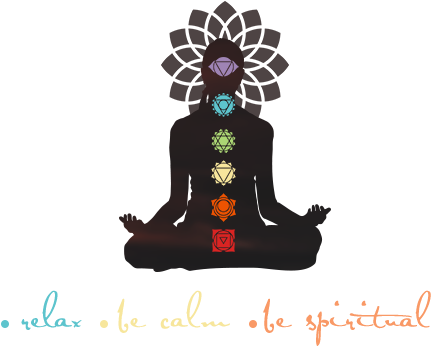Learn about the holistic approach behind Metaphysical Health Coaching & how it can help you grow into the healthiest version of yourself
Every year, millions of people set New Year’s Resolutions. In fact, according to a poll conducted by YouGov in 2022, over a third of Americans set at least one resolution at the beginning of the year. However, one poll by Forbes shows that only 13% of those people continue to work on their goals after four months. Does this sound familiar? Are you one of those people? If so, it’s not your fault. It is more than likely because you don’t have a clear vision plan for yourself.
You may have heard the saying “if you fail to plan, you’re planning to fail”. This is so true! Trying to just wing it rarely works, especially if we have big goals that we’re trying to accomplish. Having a vision plan for your year takes those pie-in-the-sky dreams and helps to make them a reality. It requires some planning and accountability. Through regularly checking in and tweaking our smaller goals, we can use compassion and determination to accomplish anything!

Step 1: Find Your Vision
The first step to creating a vision plan is to know what your vision for yourself actually is. This means determining BIG goals your life. I like to look at each life area (Physical, Intellectual, Emotional, Occupational, Financial, Environmental, Social, and Spiritual) and determine what I want each of those areas to look like in a year. A lot can happen in that amount of time, so it’s okay to think big!
Take some time to think about what you want to accomplish. Do this in whatever format you prefer. Maybe you’re a list person or maybe you prefer to make a visual collage. Whatever your preference, go with it! You can choose as many or as few goals as you’d like in all or just some of the life areas listed above.
Then you want to write them down somewhere or post them so that you can see what you are working towards. For me, this looks like creating a Resolution List on Tick Tick (one of my all-time favorite apps) and setting a reminder to look at it at the beginning of every month. That way, I can make sure I’m moving towards them.

Step 2: Break Your Vision Plan into 6-month Periods
Think to yourself “If I want to accomplish ________ by the end of the year, where should I be within 6 months?” Remember that big goals are marathons. They are journeys. We don’t just teleport from point A to B when we’re travelling somewhere. The same concept applies to your vision plan. There is a middle point somewhere between where you are and where you want to be. What does that point look like?
Maybe it’s a specific weight loss goal, or maybe it’s a weight you’d like to lift. Other examples could be consistently meditating for 3 days per week when the big goal is daily. Or it could be completing half of your planned home improvement projects, or hitting half of your savings goals. Whatever your big goals are, figure out what their halfway points look like.
Since you’ve already set your big goal dates as the end of the year, take those halfway points and jot them down in a planner, on a list, or even as a point along a visual timeline.

Step 3: Create Quarterly Goals
I get it – this sounds super corporate, but there’s a reason why quarterly goals are a thing. Each season brings a new energy and it’s a great way to break things up into even smaller pieces. Are you seeing a pattern yet?
From that halfway point, let’s break that in half again so that you have a smaller goal before and after that halfway point. Creating a good vision plan involves having benchmarks along the way. These quarterly goals should be smaller and more attainable than the other larger ones you’ve created thus far. Think about what you need to accomplish or what you need to be doing every three months in order to keep moving towards that big goal.
Stuff starts getting less hypothetical at this point. This is the point where you start to look at what’s going on during these 3-month periods. Will events, weather, holidays, etc. play a part in how things go? Will they look different or during each quarter or will it be consistent all year? Things start getting really real when we look at what we want to accomplish in only 3 months, so be realistic about the actions and efforts that you need to put into them.

Step 4: Make Monthly Mini-Goals that Align with Your Vision Plan
I am a HUGE proponent of monthly goal setting. We tend to work best in terms of weeks and months. At the end of a month, set aside some time to look at your 3, 6, and 12 month goals. In each life area, determine what you can do that month to move towards those bigger goals.
One way to do this is to write down each life area (Physical, Intellectual, Emotional, Occupational, Financial, Social, Environmental, and Spiritual). Under each of those areas, write down your monthly goals. Ask yourself “what can I do this month in order to __________ in 3 months?” A month gives us a good timeframe in which to make some solid progress without having to be overwhelmed.
What are some examples of good monthly goals? You want goals that still fit within the SMART framework. They should be specific and measurable, but also realistic and attainable, so aiming for saving $100,000 (while it fits the first two criteria), might not be the more realistic for most of us. However, setting a goal to save $100 by packing your lunches throughout the week is more appropriate.

Step 5: Determine Weekly Goals Every. Single. Week.
This is where the rubber really meets the road. I tell my clients to look at their monthly goals every Sunday or Monday morning and make their plan for the week. Goals, no matter how small and benign we make them, will never be accomplished if we don’t actively pursue them. They don’t simply manifest themselves out of thin air. It’s not glamorous, but it’s the work that gets us what we want.
I do this myself. Every week, I have a reminder to review my monthly goals. I pull them up, cross off anything that I accomplished over the previous week, and then determine what I need to do in the coming week. Then I add these actions to my to-do list. They might be something that gets a daily reminder, or it might be something that I determine I’ll do on a specific day. Remember, any step – no matter how small – will get you closer to your big goals. The little things do matter and they add up to great accomplishments!

Bonus Step: Track Your Wins
Do you ever cringe at the end of a year when you just know that your feeds are going to be flooded with people recapping all their accomplishments? If so, it could be because you feel like you didn’t accomplish much, when really it’s selective memory. It’s easy to feel like the only thing you did was survive the year, and even if that’s the case – that is perfectly okay. Sometimes we need to have a period where we rest and reset and replenish our energy for upcoming needs.
However, if you know that you ‘did stuff but can’t remember what’ – I challenge you to do this. Make another list. You can divide it in whichever way your brain likes. This could be by the week or month, it could be based on life area, or it could be in relation to the goals you are working towards. OR you could just make a running list and write everything down as you experience it.
The things you choose to add to your win list are based solely on what is an accomplishment for YOU. Let go of the comparisonitis. Don’t worry if someone else wouldn’t think that your accomplishment ‘counts’ and don’t let their mentality infiltrate your way of thinking. If eating a single vegetable every day for a week is an accomplishment to you, then write it down! If getting to bed at 11 when you normally go to sleep at 12 is an accomplishment to you, write it down! I challenge you to write down everything that you do that makes you proud of yourself. By this time next year, you will likely have a list far longer than you ever anticipated.
Key Takeaways of Having a Vision Plan:
Creating a vision plan and breaking it down into well thought-out steps is the key to success. Visualize what you want within a year and break it down into smaller steps that will add up to your overall goal. 6, 3, and 1 month goals that then determine what you need to do on a weekly and daily basis will help you keep making consistent progress towards the grand vision your have for your life.
What are some of your big goals for the year? Comment below and let me know!
Have A Goal?
Do you have a goal but are struggling to create a vision plan? Let’s work together on it and make your goals a reality!
Leave a Reply Cancel reply
Related Posts
After trying apps for many years, here's a list of 10 that I've tested and deemed worthy of using every day on my wellness...





